Torrevieja’s Pink Salt Lake – Everything you need to know before visiting
In Torrevieja is one of the most unique natural attractions that you’ll find in Europe, if not the whole world! You may have seen photos of the pink lake in Spain, and if you find yourself near Torrevieja then you’ll be pleased to know you’re not far from this remarkable place.
Not only is it the only pink lake in Spain and Europe, the only others in the world are in Australia, Mexico, Senegal, and Bolivia. So this really could be a once in a lifetime chance to see a pink lagoon.
We drive past the pink lake on a regular basis but the novelty hasn’t worn off yet, seeing the bubblegum pink water in the middle of summer still puts a smile on our faces.
If you’re looking for things to do in Torrevieja, and fancy a trip to the pink salt lakes, read on for all the information you need to know before visiting. This beautiful location is definitely one to put on your Spain bucket list.
Some of the links below are affiliate links which means we may make a small commission at no cost to you on any purchases made through these links.
Where is the pink lake in Torrevieja?
Firstly you probably want to know where the pink salt lake in Torrevieja is.
On the south east coast of the Costa Blanca you’ll find the town of Torrevieja – it’s approximately 50km south of Alicante city centre.
The pink lake is located in the nature reserve Las Salinas de Torrevieja which is made up of 2 large lakes, Laguna Salada de la Mata (a blue lake) and Laguna Salada de Torrevieja (the pink lake).
The lakes are close to each other but separated by a busy road, with housing developments on both sides. If you’re driving down this road you can’t fail to miss both of the lakes and will see the pink lake as you approach Torrevieja.
The pink lake is located approximately 4km from the centre of Torrevieja, though with an area of 1400 hectares there are lots of different points where you can see the lake.
How to get to Torrevieja’s pink salt lake
There are a few different ways to get to Torrevieja’s pink salt lake, depending on what you want to do.
By car
If you’re driving then you can park for free along Calle de las Lavanderas in the urbanisation of Torreta III. This is about 3km from the centre of town. Once parked up you’ll be able to see the lake and can walk down to the shore via one of the paths that have been made in through the grass and plants here.
If you’re staying in Alicante and want to visit this lake, we’d recommend hiring a car to get to Torrevieja as there are no trains, and buses from Alicante to Torrevieja take quite a long time.
By bike
For those who’d like to make a day of it, you can join a bike tour of Torrevieja’s salt lakes and natural park. This 2.5 hour tour meets at the Torrevieja Yacht Club and on ebike you’ll head to the Natural Park of La Mata where you’ll have chance to see both of the salt lakes and learn about the salt industry in Torrevieja.
By bus
From the Torrevieja Bus Station you can jump on a Line B bus that will take you to the urbanisation of Torreta. You can get off at the bus stop by the playground in the Torretas III urb and walk across the street to the path that will take you directly to the lake. You can find the Torrevieja bus timetables here.
If you’re unsure where to get off the bus you can always show a photo of the pink lake to the driver.
By land train
The option that we’d recommend is to jump on the land train in the centre of Torrevieja that will take you to a private part of the pink lake that you can’t get to otherwise. You’ll also get a tour of the lake and find out more about the salt works here.
The trains depart from the Paseo de la Libertad daily at 10:00, 12:00, 14:00, 16:00 and 18:00. Tickets cost €9.50 (€8.50 for children under 13 years old or people over the age of 65 years) and the tours take around an hour.
Is the pink salt lake in Torrevieja worth visiting?
Yes and no… If you live near to Torrevieja then I think it’s worth a visit to the pink lake since it’s not far away, and if you’re in Torrevieja on holiday then the land train tour is definitely worth doing.
However, I wouldn’t say that it’s worth the long drive if you’re in Alicante or further, unless you combine it with other activities in Torrevieja for a whole day out.
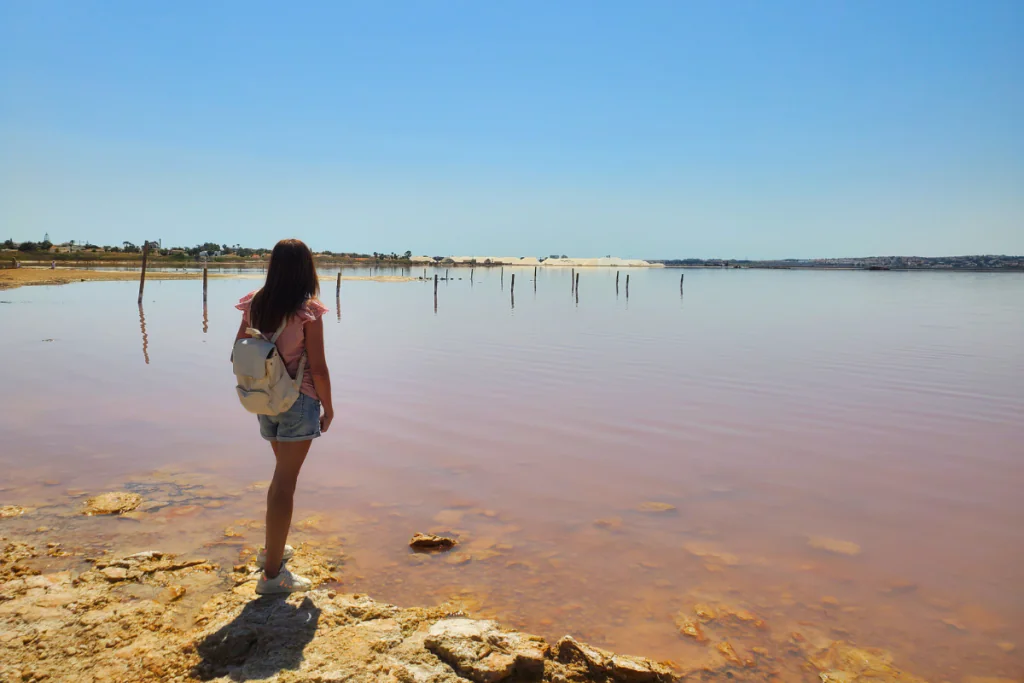
Ready to book your trip to Torrevieja?
If you’re ready to book holiday to Torrevieja these links may help…
– Find great value flights and accommodation at Expedia
– Rent a car with RentalCars.com
– Check hotel reviews at TripAdvisor
– Book your tours and excursions at GetYourGuide
– Get your Travel Insurance at Civitatis
Can you swim in the Torrevieja salt lakes?
One question that most people want to know and an important one to mention is whether or not you can swim in the pink salt lake in Torrevieja.
Unfortunately the answer is no – for both people and dogs. While the area isn’t policed and you may see people wading in, it is prohibited and you could receive a large fine of around €6,000 if caught.
The reason you’re not allowed to swim in the pink lake is due to the very high salt concentration of the water. By swimming in the lake you risk introducing substances such as sun cream, body lotions etc which will mess with the ecosystem in the water.
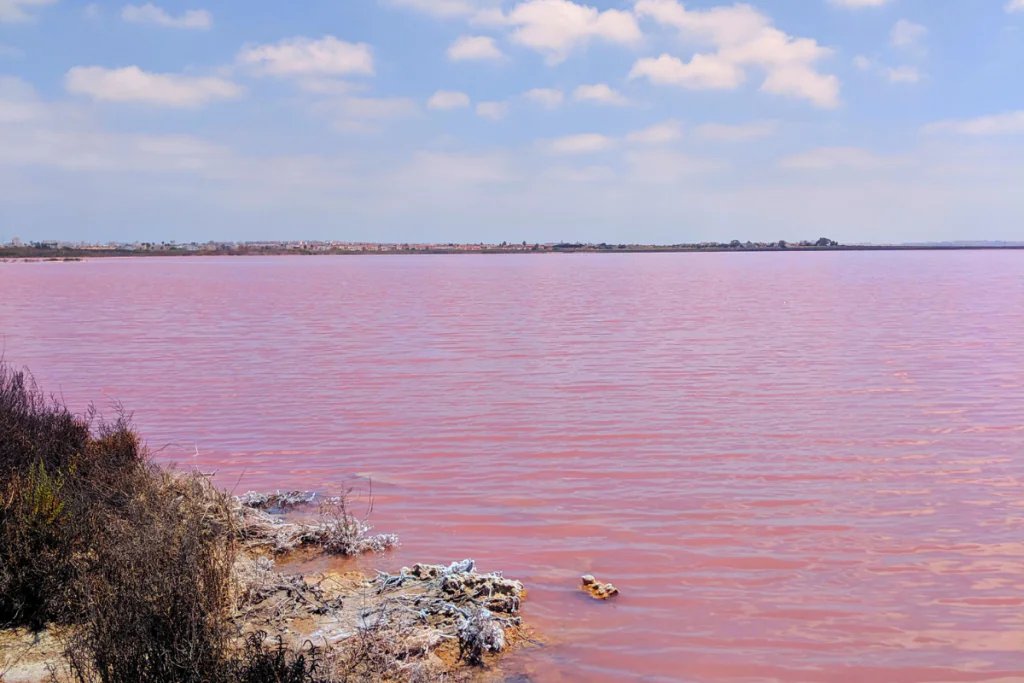
When is the best time to visit the pink lake of Torrevieja?
Having driven past the lakes regularly for the last 5 years we can say that the level of ‘pinkness’ of the lake varies massively. On a grey, overcast day the lake will usually look a dull greyish pink, but during a sunny day with blue skies the lake can be a very bright pink sometimes nearing on magenta. The photos in this post have been taken at different times if year so you can see how the colour of the water varies.
With that in mind the best time to visit the pink lake would be on a bright summer’s day during June to September.
It’s also worth mentioning here that the pinkest part of the lake is the private area near the salt mountains which you can visit on the land train tour. The public part can get quite murky, probably due to people paddling, swimming and letting their dogs in the lake.
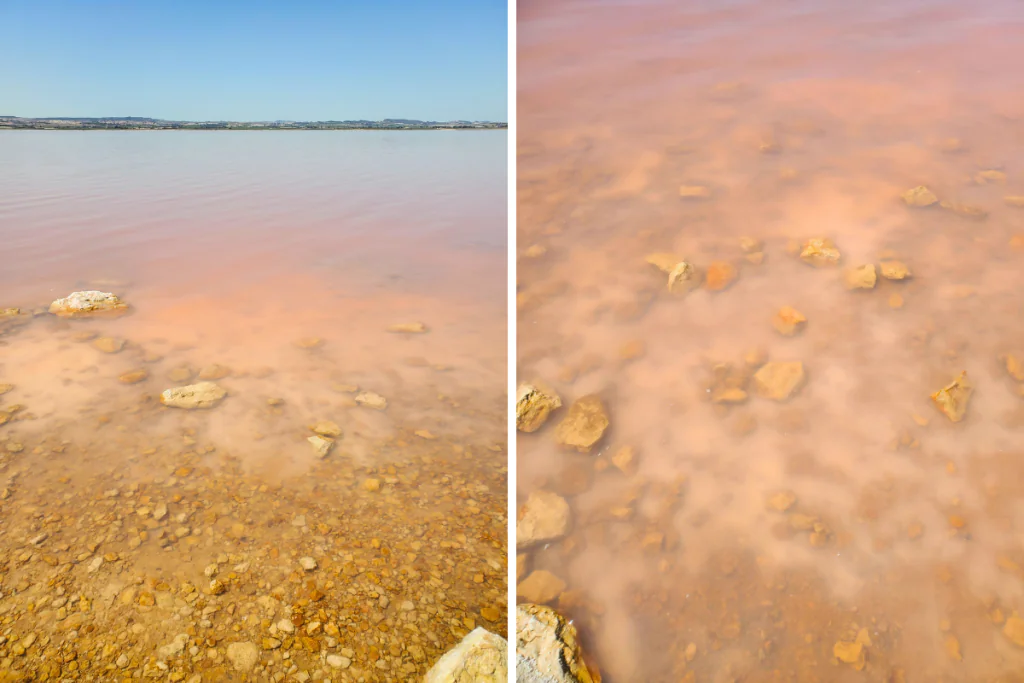
What is Torrevieja’s pink lake called in Spanish?
If you’re talking to people about the pink lake or asking for directions it may be helpful to know what the lake is called in Spanish. You may hear various different names but listen out for, or ask for, the following:
- Laguna rosa de Torrevieja
- Lago rosa de Torrevieja
The Spanish names for the blue lake or the salt lakes in general include:
- Laguna salada de Torrevieja
- Las salinas de Torrevieja
Why is Torrevieja’s salt lake pink?
The lake gets its pink colour from a bacteria called Halobacterium and a type of micro-algae called Dunaliella Salina. This bacteria produces carotenoids, which is what gives the water its vibrant pink colour. The high salt levels in Torrevieja’s pink lake create an environment where this bacteria thrives, resulting in the unusual pink colour.
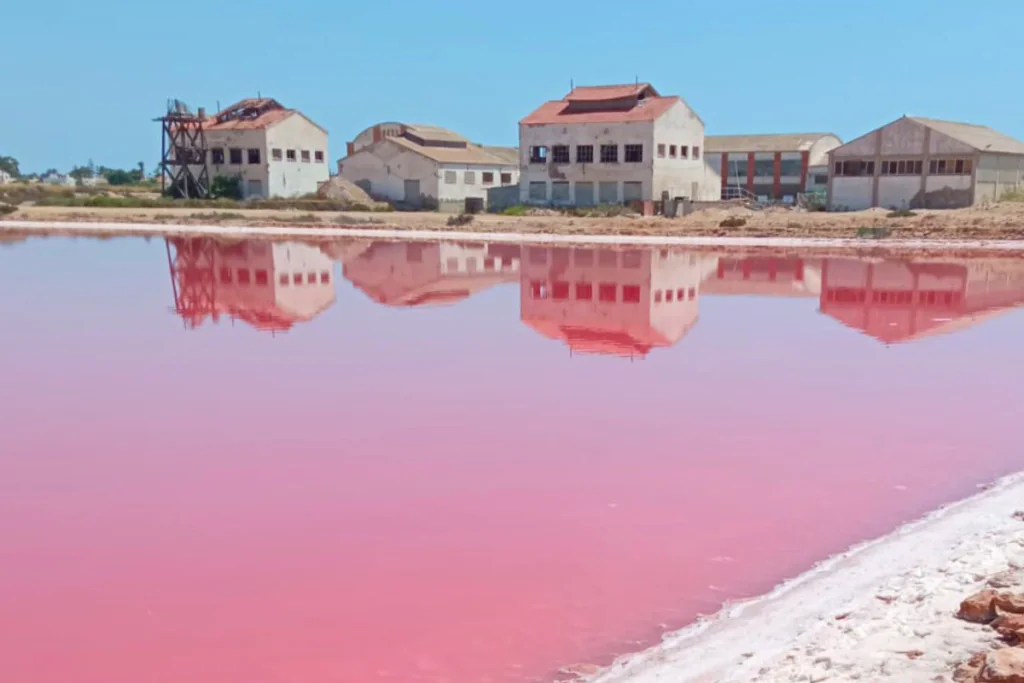
What is the pink lake in Torrevieja famous for?
Apart from it’s unique colour, the salt lake is also famous for it’s salt production. The production process involves evaporating the salty water from the lake, leaving behind large crystallized salt formations. These salt works in Torrevieja have been in operation for centuries and are still a really important industry for the local area.
The pink salt lake is also known for its health benefits as the high concentration of minerals, such as magnesium and potassium, is thought to have positive effects on skin conditions and respiratory problems. You can see the salt along the shore and on the rocks at the edge of the water.
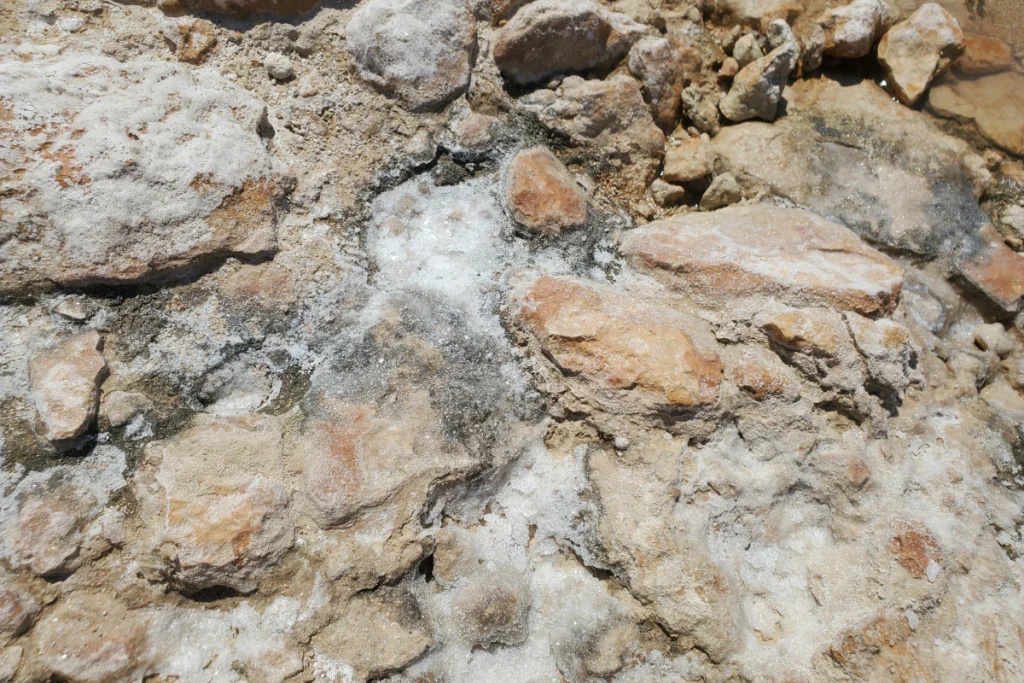
Can you see flamingos at the Torrevieja salt lakes?
In both of the lagoons in Torrevieja you can see flamingos from around February to August, but mostly during March-May which is breeding season. They don’t tend to be by the most public parts of the lake, probably due to all the people coming and going, but you can see a lot of flamingos up close on the land train tour.
Saltwater brine shrimp found in the lakes take on the pink colour by feeding on the algae and bacteria and are eaten by the flamingos which is what’s responsible for the pink colour of their feathers.
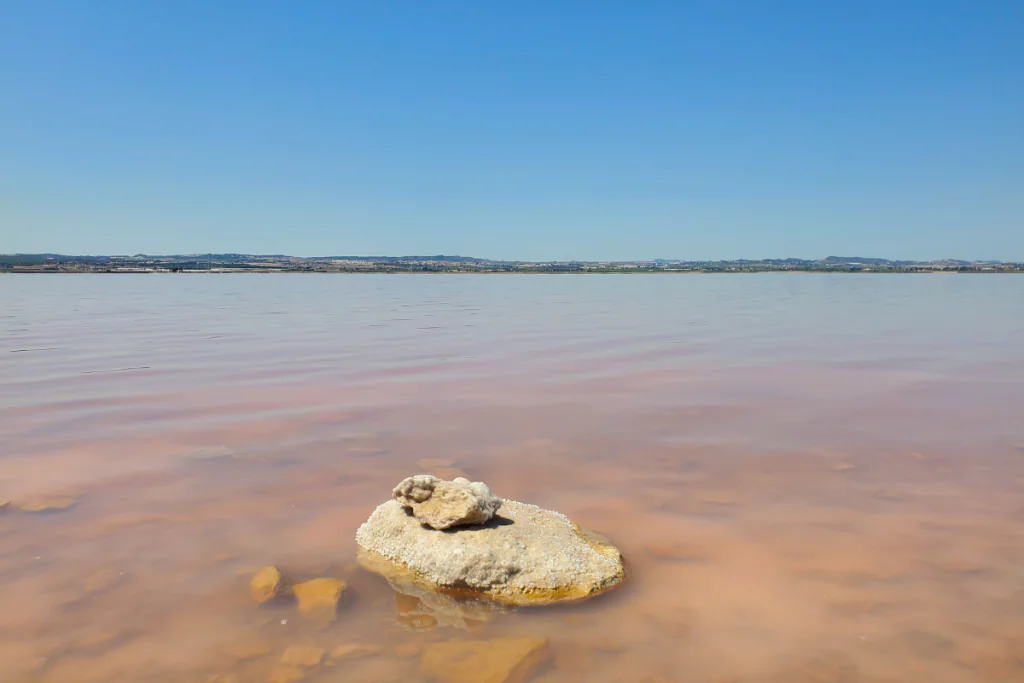
Now you have everything you need to know about visiting Torrevieja’s pink salt lakes you can get planning your trip!
Before you go…
Why not join our Facebook group to find lots more ideas of places to go and things to see on the Costa Blanca!

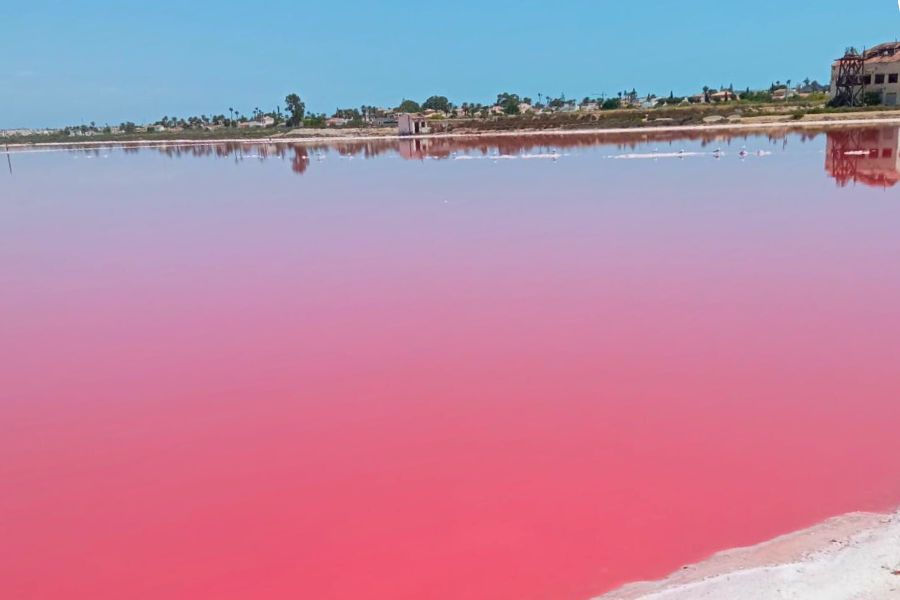

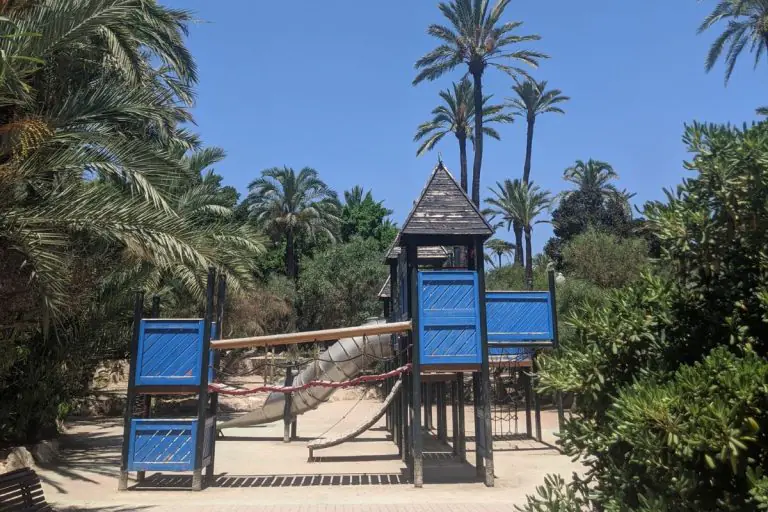
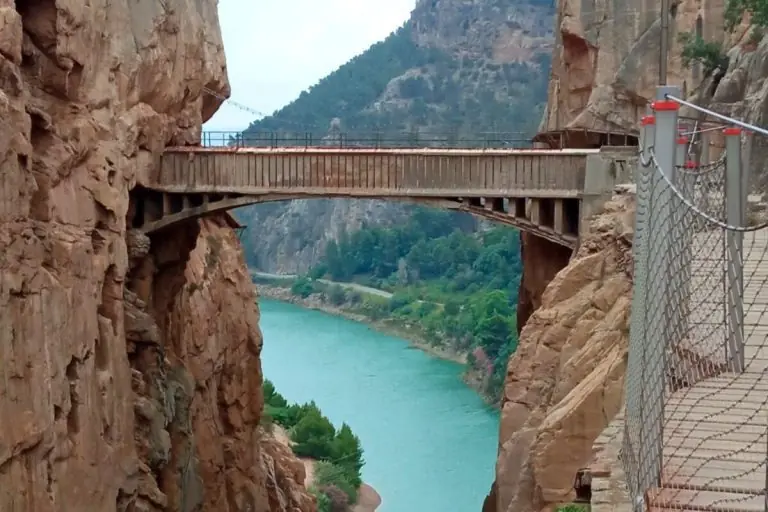
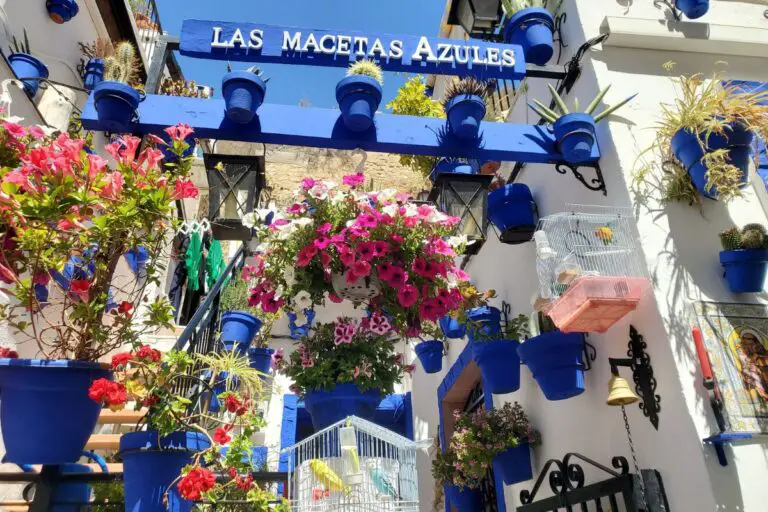
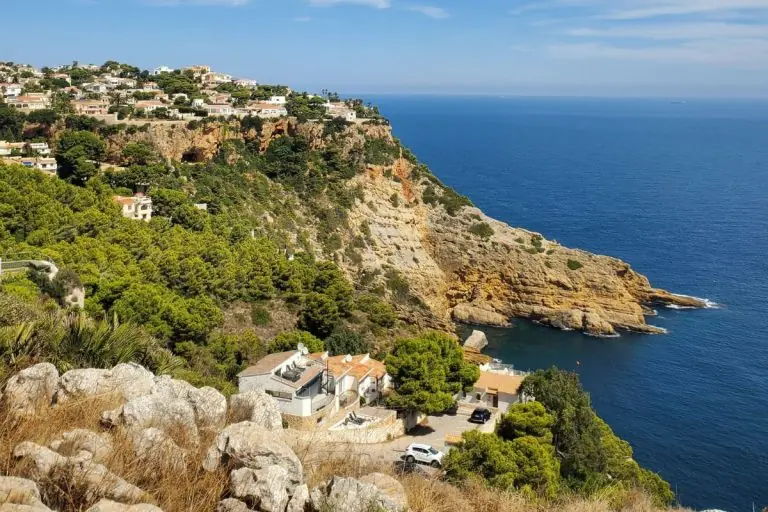
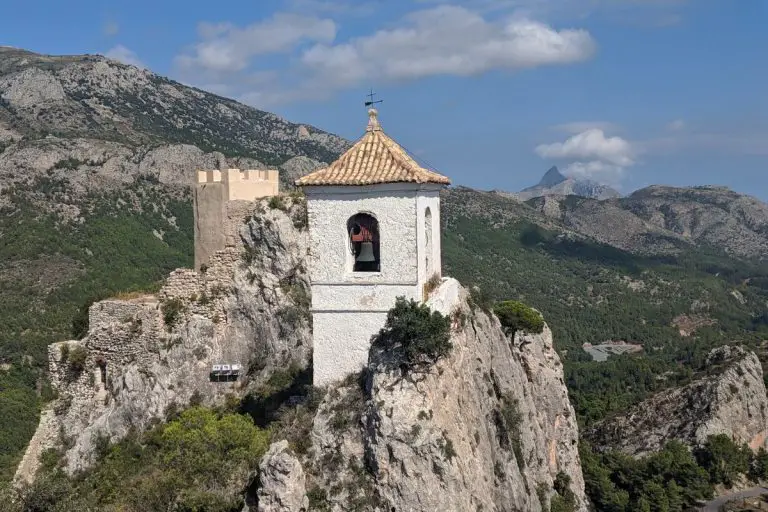
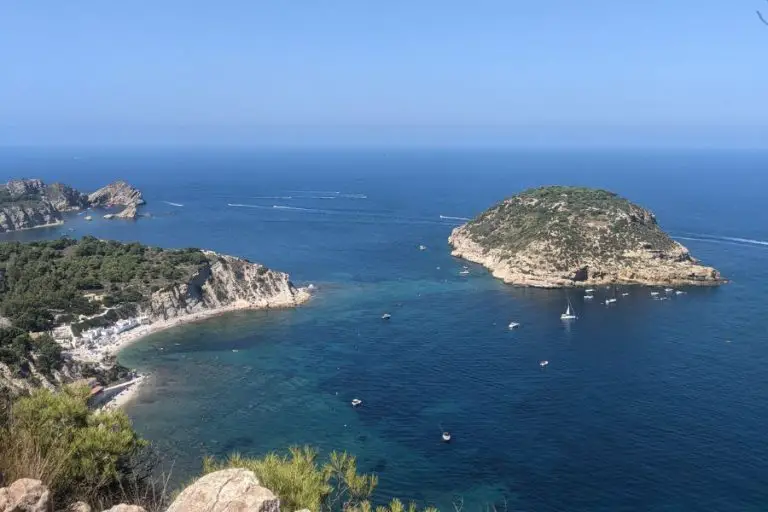
Wow, what an amazing place to visit.
Your post expanded my bucket list now 😉
Thanks for the info and if i’m every on that side of the world I would definitly check it out!
Wow, the pink lake looks cool and I’ve never heard of it until now. Interesting that bacteria is what caused it to turn pink.